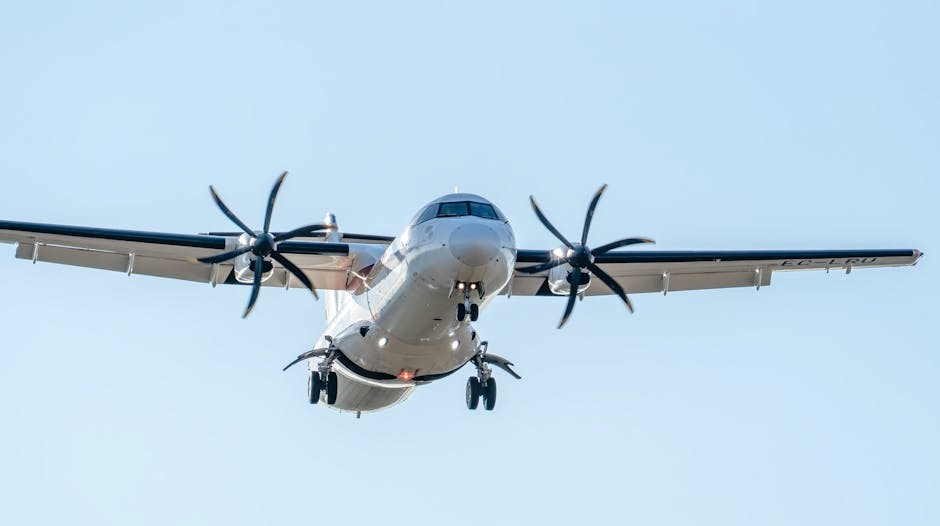This guide provides a comprehensive overview of flight principles, covering aerodynamics, forces, and historical developments. It serves as an essential resource for aviation enthusiasts and professionals alike, offering insights into the science and practice of flight. The document is designed to inspire curiosity and deepen understanding of how flight operates, making it accessible to both newcomers and seasoned experts in the field.
Overview of the Topic
The topic of flight is a fascinating and complex subject that encompasses the principles, history, and mechanics of aviation. This guide delves into the fundamental concepts that enable aircraft to fly, including aerodynamics, propulsion systems, and structural design. It explores the evolution of aviation, from early experiments with gliders to modern advancements in supersonic jets and unmanned drones. The document also examines the role of human ingenuity in overcoming the challenges of flight, such as lift generation, weight reduction, and fuel efficiency. Additionally, it highlights the importance of safety protocols, navigation systems, and pilot training in ensuring successful flights. By blending historical context with scientific explanations, this overview provides a comprehensive foundation for understanding the intricacies of flight. Whether for educational purposes or personal interest, this guide serves as an invaluable resource for anyone seeking to explore the wonders of aviation.
Importance of Studying Flight
Studying flight is essential for advancing our understanding of aviation and its role in modern society. It provides insights into the scientific principles that govern aerodynamics, propulsion, and aircraft design, which are crucial for developing safer and more efficient aviation technologies. By examining flight mechanics, engineers can improve fuel efficiency, reduce emissions, and enhance passenger comfort. Additionally, understanding flight dynamics is vital for training pilots and ensuring the safety of air travel. The study of flight also inspires innovation, driving advancements in aerospace engineering and related fields. Furthermore, it fosters a deeper appreciation for the complexities of aviation, encouraging future generations to pursue careers in this field. Ultimately, the importance of studying flight lies in its ability to address current challenges and pave the way for future advancements in global transportation and exploration.
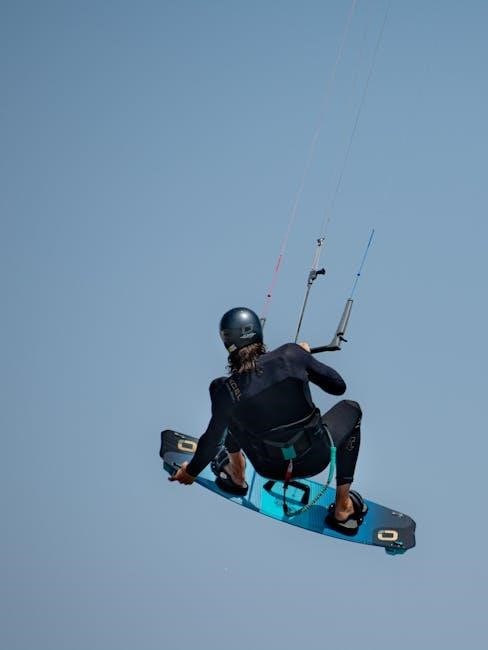
Brief History of Aviation
The history of aviation is a fascinating journey marked by innovation and perseverance. From the early conceptualizations of flight by visionaries like Leonardo da Vinci to the first successful powered flight by the Wright brothers in 1903, aviation has evolved significantly. The 19th century saw pioneers such as Sir George Cayley and Octave Chanute laying the groundwork with glider experiments and aerodynamic theories. The 20th century witnessed rapid advancements, with World War I accelerating aircraft development for military use; The interwar period brought about the rise of commercial aviation, while World War II pushed the boundaries of flight technology further. The post-war era introduced jet engines, revolutionizing air travel and cargo transport. Today, aviation continues to innovate, with modern advancements in materials, engine efficiency, and sustainable practices shaping the future of flight. This rich history underscores humanity’s relentless pursuit of conquering the skies.
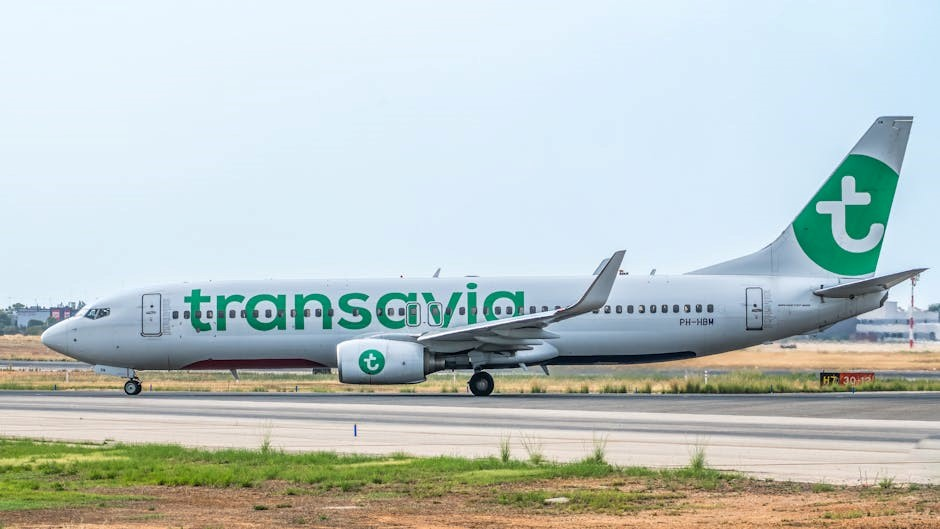
Basic Principles of Flight
This section explores the fundamental concepts of flight, including aerodynamics, the four forces, and Bernoulli’s principle, essential for understanding aircraft performance and wing design.
Aerodynamics Fundamentals
Aerodynamics is the study of air and its interaction with solid objects in motion. It is crucial for understanding how aircraft generate lift, overcome drag, and maintain flight. Lift is created by the shape of wings, which deflects air downward, producing an upward force. Bernoulli’s principle explains this phenomenon, where faster-moving air over the wing creates lower pressure above and higher pressure below. Drag, or resistance, is managed through streamlined designs and efficient engine thrust. Balancing these forces ensures stable and controlled flight. This section explores the core principles of aerodynamics, focusing on wing design, airflow dynamics, and their application in aviation. By mastering these fundamentals, pilots and engineers can optimize aircraft performance for various conditions and requirements. Aerodynamics forms the foundation of flight physics, making it essential for both theoretical understanding and practical applications.
The Four Forces of Flight
The four forces of flight—lift, weight, thrust, and drag—are fundamental to understanding how aircraft operate. Lift, generated by wings, counteracts weight, the downward force due to gravity. Thrust, produced by engines or propellers, overcomes drag, the resistance an aircraft faces as it moves through the air. For steady, level flight, lift must equal weight, and thrust must equal drag. During takeoff, thrust exceeds drag to accelerate, while lift surpasses weight to gain altitude. In cruising flight, these forces balance for smooth travel. Pilots control these forces using flaps, engines, and rudder adjustments. Mastery of the four forces is essential for safe and efficient flight operations. This section delves into how these forces interact and how pilots manipulate them to achieve desired flight outcomes, ensuring stability and performance in various conditions.
Bernoulli’s Principle and Wing Design
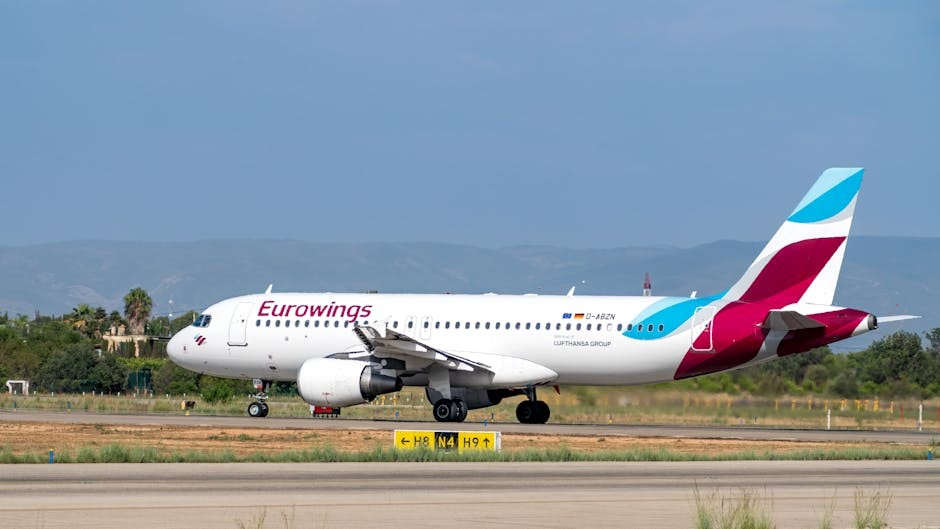
Bernoulli’s Principle explains the relationship between airspeed and pressure, which is crucial for lift generation; The principle states that as the speed of a fluid (like air) increases, its pressure decreases. This is applied in wing design, where the curved upper surface and flatter lower surface create a pressure difference. Air flows faster over the curved top, reducing pressure above the wing, while slower-moving air beneath creates higher pressure. This pressure difference generates lift, enabling flight. Wing shape, or airfoil design, maximizes this effect. Pilots adjust angle of attack to control lift, further leveraging Bernoulli’s Principle. This section explores how wing design and airflow interact to produce lift, essential for understanding flight mechanics and aircraft performance.
Types of Flight
Flight is categorized into fixed-wing, rotary-wing, and glider aircraft, each with unique designs and purposes, enabling various applications in transportation, recreation, and specialized operations worldwide.

Fixed-Wing Aircraft
Fixed-wing aircraft are characterized by their stationary wings, which generate lift due to their shape and motion through the air. Unlike rotary-wing aircraft, fixed-wing planes rely on forward motion to create airflow over the wings, enabling flight. This design is highly efficient for long-distance travel and is commonly used in commercial aviation, military operations, and private flying. The wings are typically rigid and designed to maximize aerodynamic performance, with features such as cambered surfaces and wingtips to reduce drag. Fixed-wing aircraft can be powered by propellers, jet engines, or other propulsion systems, each offering distinct advantages in speed, range, and maneuverability. Examples include commercial airliners, military jets, and small general aviation planes. Their stability and efficiency make them a cornerstone of modern aviation, suitable for a wide range of applications and environments.
Rotary-Wing Aircraft
Rotary-wing aircraft, such as helicopters and gyrocopters, generate lift through the rotation of their wings, or rotor blades, rather than fixed wings. This design allows for vertical takeoff and landing, hover, and maneuverability in confined spaces. The rotor blades produce lift by moving through the air, creating a difference in air pressure above and below the blades. Rotary-wing aircraft are highly versatile and are widely used for rescue missions, military operations, and civilian transportation. Unlike fixed-wing aircraft, they can operate in environments with limited space, making them ideal for urban areas and remote locations. However, their complexity and higher maintenance requirements compared to fixed-wing aircraft can limit their use. Despite these challenges, rotary-wing aircraft play a crucial role in modern aviation, offering unique capabilities that fixed-wing designs cannot match.

Gliders and Sailplanes
Glider and sailplane aircraft are designed to fly without engine power, relying solely on aerodynamic principles and natural forces to stay aloft. These aircraft are characterized by their long, narrow wings, which maximize lift while minimizing drag. Gliders are typically launched from a high altitude or towed by another aircraft, while sailplanes are specifically built for soaring, using rising air currents like thermals and ridge lift to extend flight duration. Both types of aircraft offer a unique and serene flying experience, emphasizing precision and control. Gliders and sailplanes are popular in recreational and competitive aviation, with pilots often engaging in cross-country flights and aerobatic maneuvers. Their lightweight construction and efficient design make them an excellent choice for training and enjoying the fundamentals of flight. These aircraft demonstrate the elegance and simplicity of soaring through the skies without the need for propulsion.
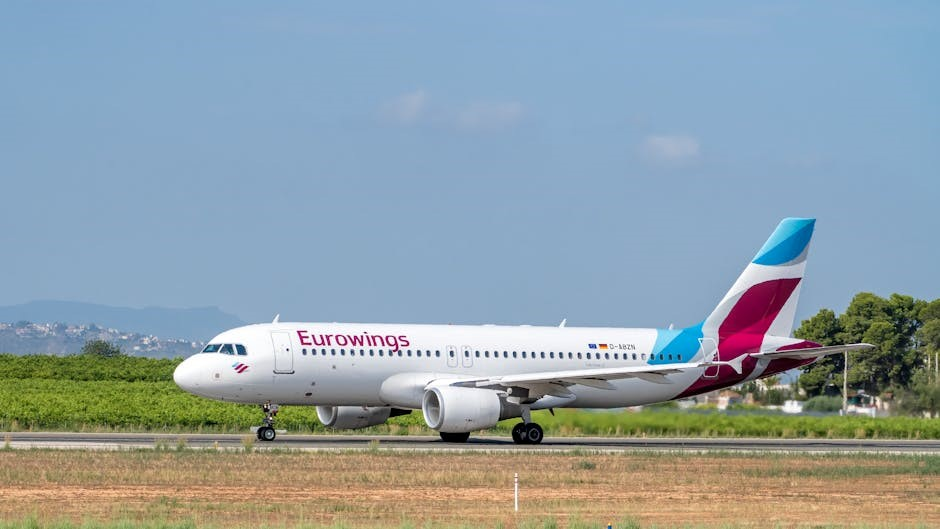
The Flight Process
The flight process involves detailed pre-flight planning, smooth takeoff, steady cruising, and precise landing. Each phase requires careful execution to ensure safety and efficiency, from preparation to touchdown.
Pre-Flight Preparations
Pre-flight preparations are critical to ensure a safe and successful journey. Pilots begin with a detailed pre-flight checklist, reviewing weather conditions, aircraft performance, and navigation systems. A thorough inspection of the aircraft is conducted to identify any potential issues. Fuel calculations are made to guarantee sufficient supply for the planned route. Navigation charts and communication systems are also verified for accuracy and functionality. Additionally, pilots review emergency procedures and ensure all safety equipment is in working order. Proper documentation, such as flight plans and passenger manifests, is completed and filed with air traffic control. Effective communication between the pilot and ground crew is essential to address any concerns. By systematically addressing each aspect of pre-flight preparation, pilots minimize risks and set the stage for a smooth, efficient flight.
Takeoff and Climbing
Takeoff and climbing are the initial phases of flight where the aircraft transitions from ground to air. Preparations involve aligning the aircraft with the runway, advancing the throttle, and monitoring instruments. As the aircraft accelerates, the pilot gently pulls back on the control yoke to initiate rotation, lifting the nosewheel off the ground. Lift is generated as the wings produce sufficient upward force, allowing the aircraft to leave the runway. Once airborne, the pilot maintains a steady pitch attitude to ensure a smooth climb. Airspeed must be carefully managed to avoid stalls while gaining altitude. The climb phase includes noise abatement procedures and configuring the aircraft for optimal performance. Reaching a safe altitude, the pilot levels off, reducing power to transition into cruising flight. Proper communication with air traffic control and continuous monitoring of systems are crucial during this phase to ensure safety and efficiency.
Cruising Altitude and Navigation
Cruising altitude is the phase where the aircraft flies at a constant height, typically between 30,000 and 40,000 feet, to maximize fuel efficiency and reduce weather impacts. Navigation during this phase relies on advanced systems like GPS, VOR, and inertial navigation, ensuring precise route adherence. Pilots monitor instruments for altitude, heading, and airspeed while adjusting power settings to maintain optimal performance. Communication with air traffic control is essential to follow flight plans and avoid traffic. Modern avionics, such as autopilot and autothrottle, assist in maintaining stability and reducing pilot workload. Environmental considerations, like wind and weather, are factored in to optimize fuel consumption and comfort. The aircraft’s position is continuously tracked, and course corrections are made as needed to stay on route. Efficient navigation ensures timely arrival while adhering to safety protocols and fuel efficiency goals.
Descent and Landing
Descent and landing mark the final phases of flight, requiring precise planning and execution. Pilots begin by gradually descending from cruising altitude, adjusting power and pitch to maintain a stable rate of descent. Communication with air traffic control is critical to obtain clearances and ensure safe separation from other aircraft. The aircraft is configured for landing, with flaps and landing gear deployed to increase drag and lift. Navigation systems guide the aircraft to the runway, where pilots align with the centerline and adjust for wind conditions. The landing phase involves touching down smoothly, applying brakes, and taxiing to the designated area. Safety protocols are strictly followed to minimize risks, and pilots remain vigilant for any unexpected challenges. Proper techniques and adherence to procedures ensure a safe and efficient conclusion to the flight.
Pilot Training and Licensing
Pilot training and licensing are crucial for ensuring safety and competence in aviation. Structured programs teach flight skills, regulations, and emergency procedures. Certification ensures pilots meet rigorous standards, preparing them for flight scenarios.
Requirements for Becoming a Pilot
Becoming a pilot requires meeting specific criteria to ensure safety and competence. Prospective pilots must be at least 17 years old, possess a valid medical certificate, and complete a certain number of flight hours. A high school diploma or equivalent is typically required, along with English proficiency. Candidates must undergo rigorous training, including ground school and flight lessons, to understand aviation regulations, weather, and navigation. Background checks and a clean legal record are also necessary. Additionally, pilots must demonstrate physical and mental fitness through regular medical evaluations. These requirements vary slightly depending on the type of pilot license sought, such as private, commercial, or airline transport. Meeting these standards ensures pilots are well-prepared to operate aircraft safely and efficiently;
Flight School and Training Programs
Flight schools offer structured training programs designed to equip aspiring pilots with the necessary skills and knowledge. These programs typically combine ground school with practical flight lessons, ensuring a comprehensive understanding of aviation principles. Students learn about weather, navigation, regulations, and aircraft mechanics through detailed coursework. Flight training includes hands-on experience with aircraft operations, takeoffs, landings, and emergency procedures. Many programs incorporate advanced simulators to enhance training realism. Instructors provide personalized feedback, helping students improve their techniques and decision-making. The curriculum is designed to meet regulatory requirements while fostering confidence and competence. By completing these programs, students gain the expertise needed to excel in their aviation careers, whether pursuing recreational or professional piloting. The structured approach ensures a smooth transition from theory to practical application, preparing graduates for the challenges of real-world flight.
Licensing and Certification
Licensing and certification are critical milestones for aspiring pilots, ensuring they meet rigorous safety and competency standards. To obtain a pilot’s license, candidates must complete required flight hours, pass written exams, and demonstrate proficiency in aircraft operation. The process typically involves a medical evaluation to ensure fitness for flying. Regulatory bodies, such as the Federal Aviation Administration (FAA), oversee these requirements to maintain aviation safety. Certifications vary by country and aircraft type, with options for private, commercial, and airline transport pilot licenses. Each level requires additional training and testing, reflecting the increasing complexity of responsibilities. Certification also involves regular recurrent training to stay updated on safety protocols and advancements in aviation technology. Licensing ensures pilots are prepared to handle emergencies and operate aircraft safely, safeguarding both themselves and passengers. This structured certification process is essential for maintaining high standards in the aviation industry.

Aviation Technology
Aviation technology advances safety and efficiency through innovative systems. Cockpit instruments, navigation systems, and avionics enhance pilot decision-making. Modern communication tools ensure seamless interaction between aircraft and air traffic control, improving overall flight performance and safety standards.
Cockpit Instruments and Controls
In modern aircraft, the cockpit is equipped with a variety of instruments and controls designed to monitor and manage flight operations. Primary flight instruments, such as the altimeter, airspeed indicator, and heading indicator, provide critical data on altitude, speed, and direction; Secondary instruments, like the tachometer and fuel gauge, monitor engine performance and resource levels. Flight controls, including the yoke or stick, rudder pedals, and throttle, enable pilots to maneuver the aircraft with precision. Modern cockpits also feature advanced avionics, such as glass cockpits with digital displays, which integrate data for improved readability. Additionally, autoflight systems and autothrottle reduce pilot workload, enhancing safety and efficiency. These tools work together to ensure smooth, controlled, and informed flight operations, making them indispensable for pilots.
Navigation Systems and Avionics
Modern aircraft rely on advanced navigation systems and avionics to ensure precise flight operations. GPS systems provide accurate location data, enabling pilots to track their position and plan routes efficiently. Radar systems are used for traffic avoidance and weather monitoring, enhancing situational awareness. Avionics encompass a range of electronic systems, including communication devices, navigation aids, and flight management computers. These tools integrate data from various sensors to assist pilots in making informed decisions. Additionally, autopilot systems automate certain functions, reducing workload and improving flight stability. Modern avionics also support real-time communication with air traffic control and other aircraft, ensuring seamless coordination. Together, these technologies enhance safety, efficiency, and accuracy in navigation, making them indispensable for modern aviation. They also enable pilots to adapt to changing conditions, such as weather or air traffic, with greater ease and precision.
Communication in Aviation
Effective communication is critical in aviation, ensuring the safety and efficiency of flight operations. Radio communication remains a cornerstone, with pilots and air traffic control using standardized terminology to convey clear instructions and updates. Aviation communication systems include tools like GPS and satellite links, enabling real-time data exchange between aircraft and ground systems. These technologies facilitate precise navigation and coordination, reducing the risk of misunderstandings. Additionally, cockpit voice recorders and transponders play vital roles in monitoring and enhancing communication practices. Modern advancements, such as data link communication, are increasingly replacing traditional voice communications, offering faster and more reliable information transfer. Clear and precise communication protocols are essential for avoiding errors and ensuring seamless collaboration among all stakeholders in the aviation process. These systems are continually updated to meet the evolving demands of modern air travel.
Safety and Regulations
Safety and regulations are paramount in aviation, ensuring compliance with international standards. Protocols include emergency procedures, aircraft maintenance, and crew training. Regulatory bodies like the FAA oversee adherence to guidelines, while emergency preparedness is critical for minimizing risks. These measures collectively safeguard passengers, crew, and ground operations, maintaining trust in air travel.
Aviation Safety Protocols
Aviation safety protocols are critical to ensuring the well-being of passengers, crew, and aircraft. These protocols encompass rigorous pre-flight checks, adherence to operational guidelines, and emergency preparedness. Standard Operating Procedures (SOPs) are meticulously followed to minimize risks. Regular maintenance of aircraft systems, including engines and navigation equipment, is essential. Crew training emphasizes situational awareness and crisis management. Emergency procedures, such as evacuation drills and system failures, are practiced to ensure swift and effective responses. Compliance with regulatory requirements set by bodies like the Federal Aviation Administration (FAA) further enhances safety standards. Continuous monitoring of weather conditions, air traffic control communication, and passenger behavior also play vital roles. By integrating these measures, the aviation industry strives to maintain its impressive safety record, safeguarding lives and fostering public confidence in air travel.
Emergency Procedures
Emergency procedures in aviation are meticulously designed to address unexpected situations, ensuring the safety of passengers and crew. These protocols include evacuation drills, system failures, and medical emergencies. Pilots and cabin crew undergo extensive training to handle crises effectively. Emergency checklists are followed rigorously to maintain order and efficiency. Communication with air traffic control is critical, providing updates on the situation and requesting assistance if needed. Passenger briefings before takeoff highlight key safety measures, such as the location of exits and life jackets. In the event of an emergency, the primary goal is to minimize risk and ensure a swift, organized response. These procedures are regularly updated based on industry best practices and regulatory guidelines, reflecting the aviation industry’s commitment to safety and preparedness.
Regulatory Bodies in Aviation

Regulatory bodies play a crucial role in ensuring the safety and efficiency of aviation. The Federal Aviation Administration (FAA) in the United States and the European Union Aviation Safety Agency (EASA) in Europe are among the most prominent organizations. These bodies establish and enforce strict guidelines for aircraft design, pilot licensing, and operational standards. They also oversee the certification of airports and air traffic control systems. International Civil Aviation Organization (ICAO) works globally to harmonize aviation regulations and practices. These organizations collaborate to address emerging challenges and implement new technologies. Their efforts ensure that aviation remains one of the safest modes of transportation, adhering to global standards while fostering innovation and efficiency in the industry.
The study of flight reveals its complexity and significance, shaping modern transportation and inspiring future innovations. Continuous learning and adaptation are key to advancing aviation safety and efficiency globally.
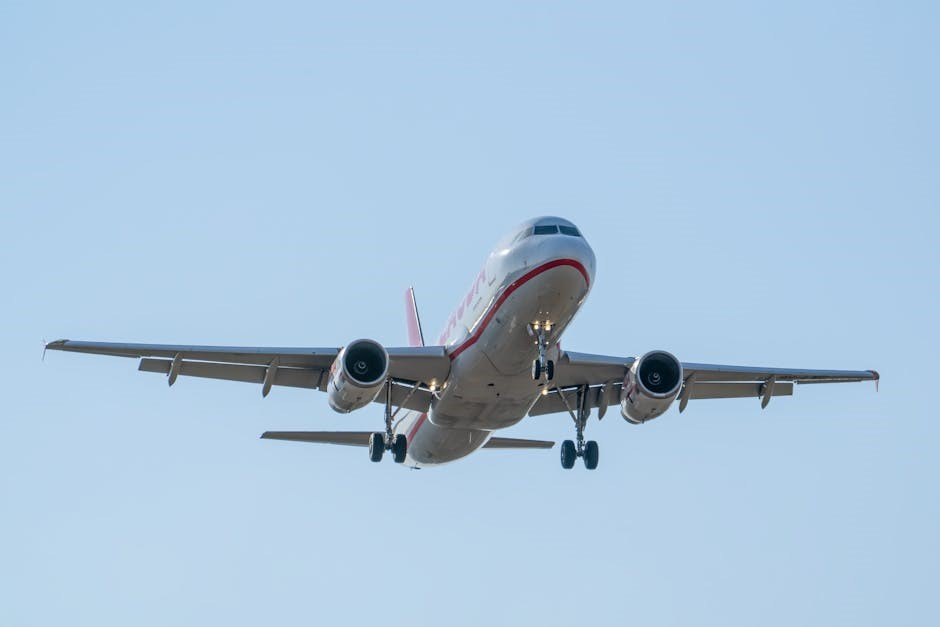
Future of Flight and Aviation
The future of flight is poised for transformative change, driven by advancements in electric propulsion and autonomous systems. Innovations like electric vertical takeoff and landing (eVTOL) aircraft and solar-powered planes are redefining urban mobility and sustainability. The integration of 5G technology promises enhanced communication and navigation, while hydrogen fuel cells offer a cleaner alternative for long-haul flights. Space exploration is becoming more accessible, with commercial ventures bridging aviation and space travel. Drones are revolutionizing cargo transport, and advancements in noise reduction technologies aim to make flights quieter and more efficient; As these technologies evolve, there is a growing emphasis on renewable energy and eco-friendly practices. The role of AI in optimizing flight operations and enhancing safety will be crucial. Pilots and passengers alike will experience new training paradigms and improved in-flight experiences. The future of aviation is not just about technology but also about creating a seamless, sustainable, and connected sky.
